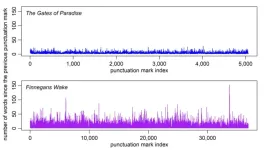(Press-News.org)
The review and writing sessions, held from July 22-25, 2024, gathered specialists from South and North America, Australia, Asia, Europe, and Africa. Participants brought expertise in the disciplines of water management, environmental data and modelling, crop nutrition including nitrogen and carbon, and farmer-centric agronomy.
“The strategic task for this group was to focus its attention on whether our understanding of landscape relationships between terrain, water, carbon, and changing farming objectives provides opportunities for 4R crop nutrition to increase productivity and resilience of such landscapes,” explained Dr. Thomas Oberthür, APNI Director of Business and Partnerships.
The expert group reviewed topical knowledge related to the connections, or nexus, for carbon, water, nitrogen, plus farmer priorities in agricultural landscapes. The team also discussed scientific concepts that could underpin sustainable, multipurpose, and farmer-centric landscape management.
Africa’s population, presently at 1.2 billion but projected to be 2.54 billion by 2050, is a one of the driving points around these discussions due to the increased pressure on our land resources to produce more food. Recently, various governments have made commitments to increase investment in fertilizers during the Fertilizer and Soil Health Summit (AFSH) held under the aegis of the African Union during May 2024 in Nairobi, Kenya. This new commitment implies a widely recognized need to increase nitrogen input into the continent’s agro ecosystems.
During the workshop discussions were centered around the need to explore the questions of sustainability under this new scenario of increased nitrogen use, and how this shift can fundamentally affect water availability and use, carbon losses, uptake and sequestration, and ultimately soil health and productivity. 4R Nutrient Stewardship is a framework for sustainable crop nutrition that is globally recognized as a basis for the identification and implementation of responsible and effective management of nutrient resources. APNI leads the development and adoption of 4R principles and practices in Africa through its Continental research and outreach programs.
“It’s about purposely emphasizing the nexus of nitrogen, water and carbon. People have thought about those three factors separately for a long time, but our discussion has been around the entire nexus because we know they interact, and this interaction varies greatly depending on where farmers are within the landscape,” explained Dr. James Mutegi, APNI Senior Scientist.
Invited members of the workshop included: Dr. Aracely Castro, Global Green Growth Institute (GGGI), Tegucigalpa, Honduras; Prof. Richard Harper, Murdoch University, Perth, Australia; Prof. Paul Gessler, University of Idaho, Moscow, USA; Prof. Simon Cook, Murdoch University, Perth, Australia; Dr. Mangi Lal Jat, International Crops Research Institute for the Semi-Arid Tropics (ICRISAT), Patancheruvu, India; Dr. Matthew McCartney, International Water Management Institute (IWMI), Colombo, Sri Lanka; Dr. Xin Zhang, University of Maryland, Baltimore, USA; Dr. Erik Veneklaas, University of Western Australia, Perth, Australia; Prof. Mark Mulligan, King’s College London, Strand, UK.
"The long-term goals for this concept are that food systems in Africa will respond to our demands while preserving and reinvesting in natural and soil capital. We aim for a balanced development pathway, understanding the effects of plant nutrition on carbon balance at both landscape and continental scales, contributing significantly to sustainability within Africa and globally," said Prof. Simon Cook, Murdoch University, and Strategic Advisor for APNI.
This international advisory group will continue to explore how food production, soil health and water management can be tied together within a single concept of agricultural development. A key outcome expected from the group’s interactions will be a peer-reviewed synthesis that can clarify our understanding of how farming communities can thrive within the landscapes in which they perceive and adapt to change through their management of not only soil nutrients, but also water and carbon.
"The African Plant Nutrition Institute was established to support the growth of agri-food systems in Africa. The key to addressing challenges lies in plant nutrition. If we improve it, it's a solution; if we follow old methods, it could be problematic. That's why APNI must lead this concept and find new ways to manage plant nutrition in African food systems," explained Prof. Cook.
###
About APNI
The African Plant Nutrition Institute (APNI), established during 2019, is a not-for-profit research and development organization headquartered in Benguérir, Morocco. APNI’s mission is enhanced plant nutrition for a resilient and food-secure Africa. APNI develops fundamental and applied knowledge, know-how, and methodologies. By working closely with strategic partners across Africa, APNI ensures that these advances are adapted to specific local conditions and crops, and then adopted by farmers. A shared goal for APNI’s initiatives is capacity building for farming families to secure them against internal and external market shocks, generate better incomes, and improve food security and nutrition. Plant nutrition research remains central to private and public sector investments in support of African farmers. APNI field offices are in Settat, Morocco; Nairobi, Kenya; and Yamoussoukro, Côted’Ivoire. More on www.apni.net
END
Esophageal cancer, a highly aggressive malignancy originating in the esophageal epithelium, poses significant public health challenges in China, where it ranks sixth in incidence and fifth in mortality among cancers. The country's large population contributes to over half of the global cases and deaths from esophageal cancer. This cancer's poor prognosis is often due to late diagnosis, as early-stage esophageal cancer is typically asymptomatic, leading to diagnoses at more advanced stages. The geographical distribution of high-risk areas in China, such as the southern side of the ...
Nakkash & Griffin Engaging Virginia Youth & Community In Designing LGBTQ+ Inclusive Vaping Prevention Interventions
Rima Nakkash, Professor, Global and Community Health, College of Public Health, and Kenneth Griffin, Professor, Global and Community Health, College of Public Health, received funding for the project: “Engaging Virginia youth and community in designing LGBTQ+ Inclusive Vaping Prevention Interventions.”
The researchers are developing evidence-based vaping prevention interventions tailored for LGBTQ+ youth in Virginia, informed by input from youth and stakeholders in this community.
Nakkash and Griffin ...
Cuellar Examining Negotiated Rates For Behavioral Health & Primary Care Providers
Alison Cuellar, Associate Dean of Research, College of Public Health; Professor, Health Administration and Policy, received funding for the project: “Examining Negotiated Rates for Behavioral Health and Primary Care Providers.” The goal of the study is to inform future Medicaid policy by examining differences in how much payers reimburse for medical services in Virginia.
Cuellar is a Co-Investigator on the project with ...
Bottom Line: The U.S. Preventive Services Task Force (USPSTF) concludes that the current evidence is insufficient to assess the balance of benefits and harms of screening and routine supplementation for iron deficiency and iron deficiency anemia in pregnant persons to prevent adverse maternal and infant health outcomes. Iron deficiency is the leading cause of anemia during pregnancy. According to survey data from 1999 to 2006, overall estimated prevalence of iron deficiency during pregnancy is near 18% and increases across the three trimesters of pregnancy. An estimated 5% of pregnant ...
Serous effusion, defined as the excessive accumulation of fluid in body cavities such as the pleural, pericardial, and peritoneal spaces, is a critical diagnostic challenge in pathology. Cytological evaluation of serous fluids provides vital information for detecting underlying etiologies, such as malignancy, and helps in evaluating tumor stages and customizing treatment plans. To address inconsistencies in the diagnostic criteria and nomenclature used in fluid cytology reporting, the International Academy of Cytology and the American Society of Cytopathology introduced The International ...
WASHINGTON, Aug. 20, 2024 – Statistical analysis of classic literature has shown that the way punctuation breaks up text obeys certain universal mathematical relationships. James Joyce’s tome “Finnegans Wake,” however, famously breaks the rules of normal prose through its unusual, dreamlike stream of consciousness. New work in chaos theory, published in the journal Chaos, from AIP Publishing, takes a closer look at how Joyce’s challenging novel stands out, mathematically.
Researchers have compared the distribution of punctuation marks in various experimental novels to determine the underlying order of “Finnegans Wake.” ...
About The Study: In this disproportionality study of an adverse drug reaction database, researchers identified a disproportionality signal of suicidal ideation with semaglutide, but not for liraglutide, particularly among patients with co-reported antidepressant use, a proxy for affective disorders (a notable exclusion criteria of premarketing clinical trials). A detected signal of semaglutide-associated suicidal ideation warrants urgent clarification.
Corresponding Author: To contact the corresponding author, Georgios Schoretsanitis, ...
About The Study: In this cross-sectional study, approximately 50% of cancer survivors experienced cancer-related financial hardship, with a disproportionate number of survivors who were younger, were Medicare or Medicaid beneficiaries, were socioeconomically disadvantaged, and had advanced disease. Social vulnerability was independently associated with increasing levels of financial hardship, emphasizing the central role one’s community may play in cancer survivorship and the compounding financial detriments of residing in a socially vulnerable community.
Corresponding ...
Patients who overdose on opioids and have a pulse are often given naloxone (Narcan) by first responders, a common life-saving measure.
However, emergency medical service (EMS) agencies have different protocols for administering naloxone, so there is little evidence to support its use in patients without a pulse who experienced opioid-associated out of hospital cardiac arrest (OHCA).
A recent study by UC Davis Health researchers set out to assess the effects of giving naloxone administration by paramedics to patients with OHCA.
The study, published in Jama Network Open, ...
Researchers at Weill Cornell Medicine and NewYork-Presbyterian found that a self-guided cognitive behavioral therapy (CBT) app, called Maya, significantly reduced anxiety in young adults struggling with mental health challenges. The decrease in anxiety symptoms was clinically and statistically significant at six weeks and continued at the 12-week follow-up period with improvement levels similar to anxiety medication studies.
The study, published Aug. 20 in JAMA Network Open, looked at how young adults ages ...



